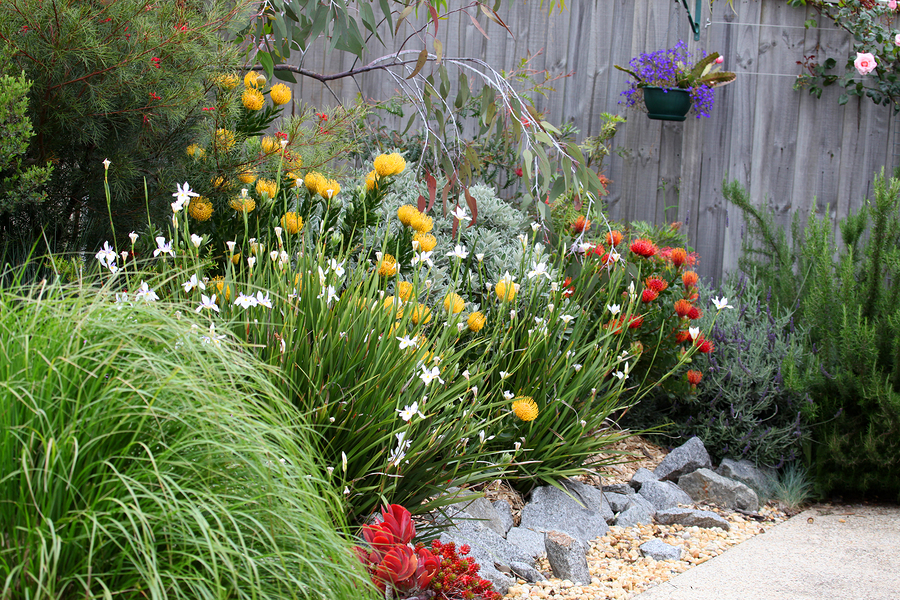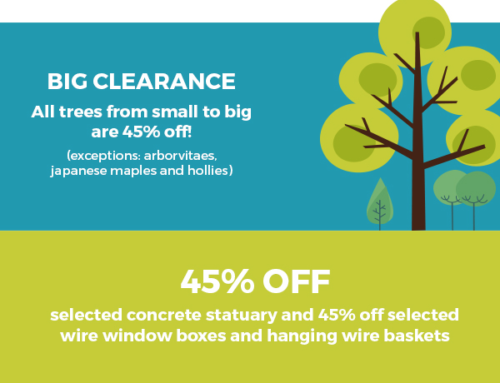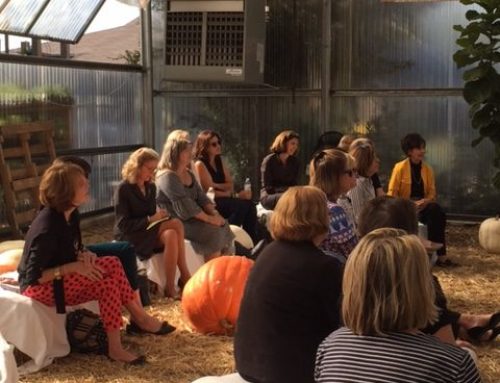These days, there is so much development going on that plants that are native to an area are often destroyed or pushed out by plantings of non-native plants. Natural wildflowers, trees, shrubs, herbs and other plants that are native to an area are usually sensitive to the kind of care and treatment that is required for non-native species, which generally require quite a bit of water, pesticides and soil amendment to flourish.
This is ironic because when you choose native species to landscape your yard, you can enjoy a natural, healthy, carefree yard that requires no pesticides, minimal watering and little if any fertilization. In this article, we’ll discuss the concept of native landscaping and provide some smart tips on transforming your yard into a carefree native plant landscape.
Assess Your Environment
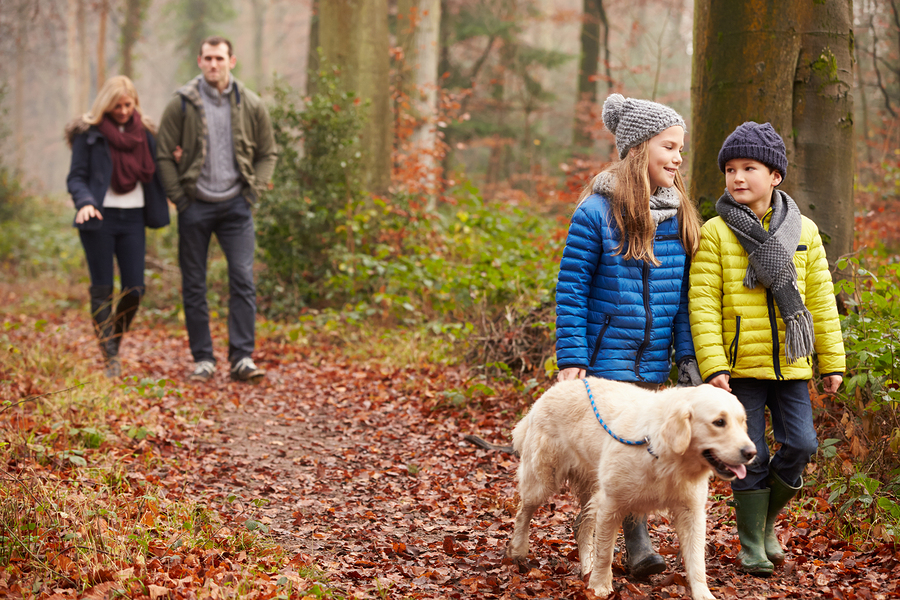
Begin by knowing just what you have to work with. Take into account the type of soil you have; whether or not you have good drainage and the amount of shade or sun your property receives. Take your cue from nature in designing your native landscape. Look for plants that naturally grow in the conditions you already have. This is an effortless and instinctive method of landscape design.
Take every opportunity to explore the natural landscape in your area. Go for walks in nature and make a study of native plants and animals. When you are ready to plant, you will use a combination of what you’ve learned in nature and of typical landscaping concepts. For example, once you are familiar with which plants grow taller and which make good groundcovers you’ll have a good idea of how you wish to place your plants for the most attractive and inviting appearance.
Prepare Your Soil

If your yard is already filled with invasive type plants that have taken over, you will need to get rid of them before you can begin your new landscaping. You can do this by tilling or by smothering unwanted plants with a process called solarization. To do this, you would water the unwanted plants and then cover them with clear plastic. Leave the plastic in place for several months. Once the plants have died back, remove the plastic and add a layer of heavy, natural mulch (e.g. leaves).
In some developed areas, topsoil has been scraped away. What’s left is not very fertile or conducive to growth of any sort of plant. With this type of soil, many people find it necessary to use chemical fertilizers to keep anything alive. If this is the case with your soil, you will need to take some time to prepare the soil for a natural and native planting. You can do this by importing natural, composted soil. You can also create your own composted soil by maintaining an active compost pile or bin.
Whatever preparations you make, be sure to cover prepared soil with a heavy mulch to prevent unwanted growth. When you are ready to plant your new native plants, dig a hole twice the size of the root ball of your new plant. Place your plant and fill in the hole with a high quality, natural soil. Mulch around the plant to prevent any errant vestiges of non-native plants from springing through.
Choosing The Right Plants

Combine your study of local native plants with a solid assessment of your soil conditions and the environmental conditions of your yard. Work with your local nursery to have the chemistry of your soil assessed. Also let local nurseries know that you are looking for healthy native plants for your yard. When they know that there is a market for these plants, they can begin stocking them for you.
It may take a while to find healthy specimens of native plants at your local nursery; however, with proper permission you may be able to harvest your own specimens from natural settings in your area. When choosing plants, be sure to look for strong, healthy specimens that have a good branching structure. If harvesting them, be sure to take along a bucket with a couple of inches of water in it so that you can set the plants in the water to prevent them from wilting and/or dying on the way home. When you find a plant that you would like to relocate to your yard, be sure to dig it out carefully. Avoid damaging the roots and include a large enough root ball to help the plant make the transition to your soil easily.
You can also grow native plants from seed. Do a little research to see if there is a native plant society in your area. Joining an organization such as this is a good way to learn about native plants, meet like minded people and obtain plants and seeds for your own yard.
A Carefree Native Landscape Takes Some Initial Work!
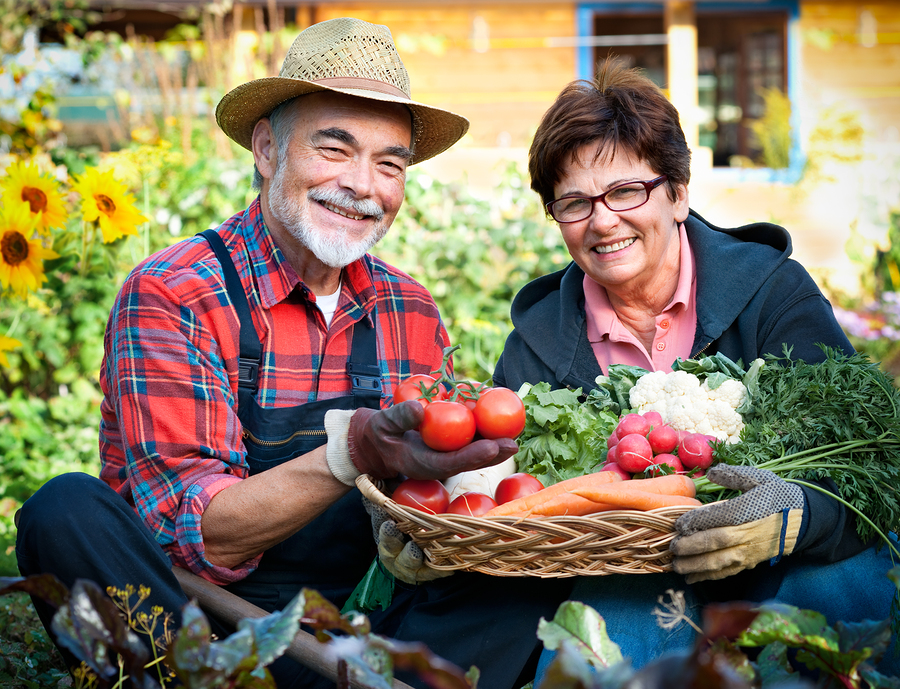
It’s easy to see that establishing your all natural, native landscape will take some effort and determination in the beginning. Just as with any garden, you will need to prepare the soil, do some planning and put some work into the selection and planting of your new specimens. It can take a few years for your natural landscape to become truly established, but once it is established it will fairly well care for itself.
A carefree natural landscape provides a pleasant sanctuary for you and local wildlife. Once it is established, you will be able to simply step out your door and commune with nature. When you plant native plants and maintain a natural setting, you can enjoy a yard filled with butterflies, honeybees, birds and other beneficial native fauna. You can feel good about providing habitat, conserving resources and preserving precious native plants.
